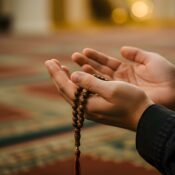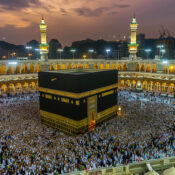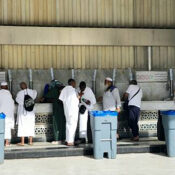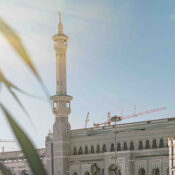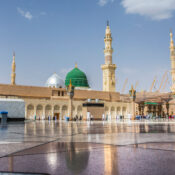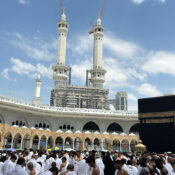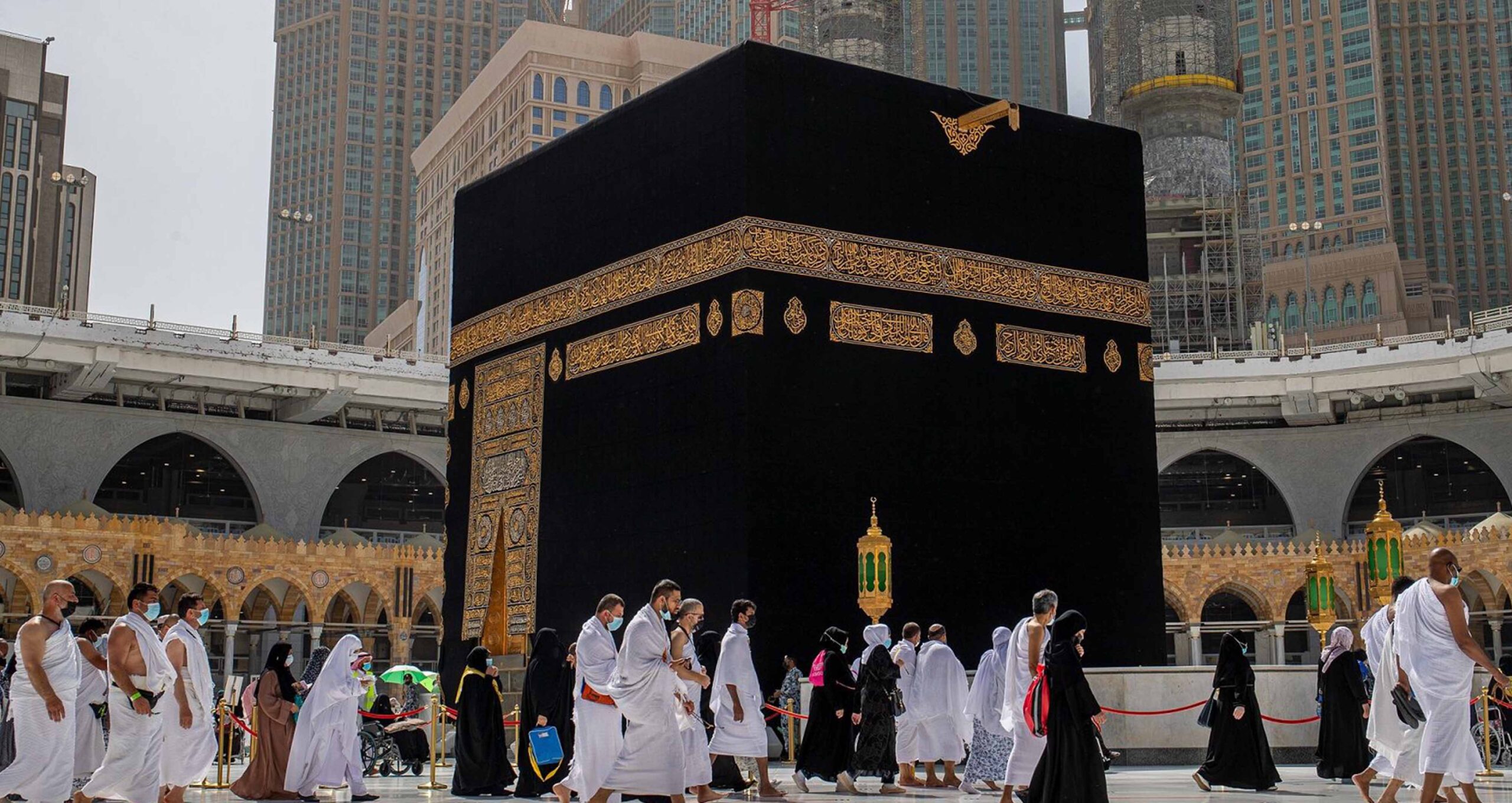
Inside the Kaaba: House of Allah
In the heart of Makkah’s Al-Masjid al-Haram—Islam’s holiest mosque—stands a structure that captures the spiritual gaze of over a billion Muslims around the world: the Kaaba. Revered as the symbolic house of Allah (God), the Kaaba is the central point toward which all Muslims face during their five daily prayers. Every year, millions of pilgrims travel from across the globe to perform Hajj and Umrah, circling this sacred building in an act of devotion known as Tawaf.
But while the Kaaba is seen by millions, few ever get a glimpse of its mysterious and majestic interior. Beyond the iconic black cloth that shrouds it lies a history steeped in prophecy, divine significance, and profound symbolism. In this blog, we take you on a journey inside the Kaaba—its origin, its structure, its inner chamber, and its place in the hearts of believers.
A Sacred Legacy: From Prophet Ibrahim to Today
The Kaaba’s story begins in the time of Prophet Ibrahim (Abraham) and his son Ismael (Ishmael), who were commanded by Allah to construct this House of Worship. Built as a symbol of monotheism, it stood in stark contrast to the idol worship prevalent in Arabia at the time.
Over the centuries, the Kaaba witnessed numerous modifications and reconstructions—from flooding and fire damage to political upheavals and architectural overhauls. The Quraysh tribe rebuilt it during Prophet Muhammad’s (PBUH) time, and after the rise of Islam, it was purified and rededicated solely to the worship of one God—marking a transformative moment in Islamic history.
In modern times, particularly in the 1950s, King Abdulaziz Al Saud and his successors initiated massive expansions of the Grand Mosque to accommodate growing numbers of pilgrims. Today, Al-Haram Mosque spans over 40 acres, yet the Kaaba remains its undisturbed center.
Architectural Majesty: A Cube of Divine Purpose
The name Kaaba means “cube” in Arabic, reflecting its cubical shape. It stands approximately 15 meters high, with sides measuring between 10.5 and 12 meters. Its corners are aligned with the four cardinal directions, a feat of ancient engineering and divine precision.
Its exterior is draped in the Kiswah, a rich black silk cloth embroidered with golden Quranic verses. Formerly imported from Egypt, the Kiswah is now produced in Saudi Arabia and replaced annually on the 9th of Dhul Hijjah, during the Hajj season. The old Kiswah is often cut into small pieces and distributed to dignitaries and select institutions as sacred relics.
One of its most iconic features is the gold-plated door, installed in 1982, which gleams against the black Kiswah. The door, elevated 2.2 meters above ground, is opened only on rare occasions, mainly for cleaning and visits by select Muslim leaders.
The Black Stone: A Heavenly Relic
Embedded in the eastern corner of the Kaaba is the Black Stone (Al-Hajar al-Aswad), revered by Muslims as a stone from Paradise. Hajj Packages 2026 Tradition holds that it was originally white, but darkened over time due to the sins of those who touched it. Pilgrims try to kiss or touch it during Tawaf, emulating the actions of Prophet Muhammad (PBUH) who kissed it during his final pilgrimage.
The stone is set within a silver frame and is currently composed of several fragments held together—a result of damage sustained over centuries. Most infamously, in 930 CE, it was stolen by the Qarmatian sect and returned years later. Today, 24 royal guards are assigned to protect it.
Inside the Kaaba: A Hidden World
Though its exterior is widely known, the interior of the Kaaba remains a mystery to most. Access is highly restricted and granted only to high-ranking Muslim officials and selected guests. The interior, measuring approximately 180 square meters, is both simple and magnificent.
Notable Features Inside:
- Three wooden columns, each over 1,300 years old, support the roof. Believed to have been installed by Abdullah bin Zubair, they have a circumference of 150 cm and a diameter of 44 cm.
- A wooden staircase leads to a hatch in the ceiling, through which maintenance is conducted.
- The walls and floor are covered in marble, and the upper walls and ceiling are adorned with red silk drapes embroidered in white Quranic verses.
- Eight inscribed stones bear Arabic calligraphy in various scripts, preserving the names of rulers who contributed to its preservation.
- A gold and silver engraved curtain, known as the Sitara, covers the inner door leading to the roof.
- A marker on the floor indicates the spot where Prophet Muhammad (PBUH) is believed to have prayed when he entered the Kaaba.
The simplicity of the interior contrasts with its spiritual weight, evoking a deep sense of humility and submission.
Symbolism and Spiritual Significance
The Kaaba does not contain any physical image or idol, underscoring Islam’s rejection of polytheism. It is not considered a literal dwelling place of Allah, but rather a symbolic house—a physical focus for spiritual unity.
Muslims around the globe pray in the direction of the Kaaba, known as the Qibla. This unified direction represents oneness, equality, and cohesion—core values in Islam. Regardless of race, nationality, or status, all Muslims are spiritually connected through this central point.
Exclusive Access: From Open Doors to VIP Entry
Historically, the Kaaba was opened twice a week for Muslims to enter and pray. Today, due to the massive crowds and security considerations, it is only opened twice a year, typically during ceremonial cleaning rituals attended by Muslim dignitaries and royal guests.
During Hajj, the Kaaba remains closed, as the focus is on collective rituals. Despite this, pilgrims feel the spiritual power of simply being near it—many overcome with emotion at the sight of the sacred cube.
A Structure of Resilience and Reverence
The Kaaba has endured natural disasters, political turmoil, and acts of desecration, yet it remains an enduring symbol of faith. The most recent restoration occurred in 1999, with careful preservation of its original features.
Originally open-roofed and semi-circular, the Kaaba has evolved into its current cubic form. Before Islam, it was surrounded by 360 idols, which Prophet Muhammad (PBUH) ordered to be destroyed during the conquest of Makkah, reestablishing the Kaaba as a place of monotheistic worship.
Conclusion: A Living Symbol of Divine Unity
Though small in size, the Kaaba holds immeasurable weight in the hearts of Muslims. It symbolizes surrender, prayer, forgiveness, and the hope of paradise. Its resilience through time reflects the enduring strength of faith.
Whether viewed from afar or—by divine fortune—witnessed from within, the Kaaba remains the spiritual axis of Islam. Umrah Packages 2025 It draws millions not just toward a location, but toward the eternal presence of God, echoing a divine call that transcends geography, history, and time.
“And [mention, O Muhammad], when We designated for Abraham the site of the House, [saying], ‘Do not associate anything with Me and purify My House for those who perform Tawaf and those who stand [in prayer] and those who bow and prostrate.’”
— Surah Al-Hajj 22:26


